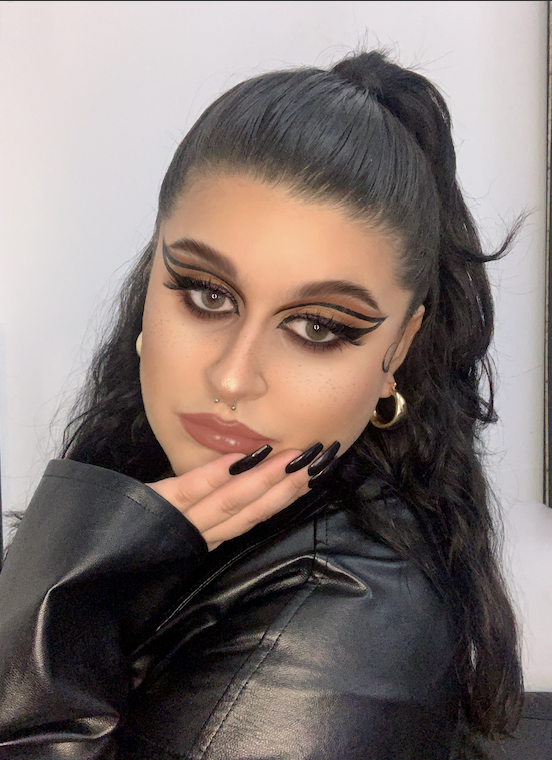You Will Defs Like these too
Life Video of The Day

Rund's Halloween Makeup TutorialOct.27.2020
New at The Modern East
Sign Up To Our Newsletter
[ninja_forms_display_form id=20]

Who among us knows the horror of looking into a mirror and spotting your first fine-lines and wrinkles? Alas, it is something every woman will experience at some point in her life. Thankfully, there are some products out there that can help keep those pesky signs of aging away for longer, or help to diminish the ones that are already there. But, navigating the sea of anti-aging products out there can be anything but smooth sailing. In this edition of Clueless Beauty, we’re going to break down the major ingredients of these products and explore what each do.
We find ourselves again with a nearly limitless amount of options when it comes to anti-aging products. Even many make-up brands have begun to tout that some of their products have anti-aging properties. Strolling along the skin-care section devoted to defying wrinkles, you probably see a few “ingredients” popping up pretty frequently: collagen, retinol, hyaluronic acid. We know these things are “good”, but we may not know what they actually do, or how effectively So, let’s find out.

Alright so, here’s the skinny on collagen. By definition, collagen is the main structural protein found in the extracellular matrix of the body’s connective tissues. It is found all throughout the body, but it is found to be most abundant in places like tissues, tendons, bones, and skin. Collagen is what keeps these things strong, firm, and plump. As we age, we stop producing as much collagen, leaving the door open to those pesky wrinkles. Now here’s the real tea when it comes to collagen as an ingredient in anti-aging products. Experts aren’t convinced that using a cream or serum with collagen, or even an oral supplement, actually fight wrinkles. The problem lies in the fact that collagen is a large molecule, so it really has a tough time actually getting into the skin. Even if you opt for a supplement, there is little certainty it will actually make it to your skin. Looks like this is one ingredient you can skip.

Glycolic acid is a naturally occurring acid that is known as one of the “fruit acids” as it can be found in certain foods. What is does it work to loosen up the stuff that holds your dead and dull skin cells to the topmost layer of your skin. With that stuff gone, the newer and healthier skin below can be revealed. It can also help improve your skin texture, tone, the size of your pores, and boosts both elastin and collagen levels in your skin. It’s also super tiny on the molecular level, so it can really penetrate deeply into the skin. Sounds good, right? It is, but if you have really sensitive skin, you may want to be cautious when you first start using it. Start with very small amounts and let your skin get gradually used to it, before you go slathering it on.

While there are currently a ton of face oils on the market touting anti-aging benefits, jojoba oil is considered the best of them. The oil comes from the nut-like pod portion of the jojoba plant. The amazing thing about it is it acts just like the oil which is found naturally on your skin, which is there to protect it. Those with sensitive skin, or those prone to break-outs also need not worry. Even though it is an oil, it doesn’t clog pores. It will however moisturize and sooth irritated and/or dry skin. Bonus points also are awarded due to the fact that you can use it on your hair and scalp as well.
Retinol is made from Vitamin A. It also happens to be proven to be one of the most effective ingredients when it comes to anti-aging and skin care. Retinol increases the rate at which your cells turnover. Doing so means that the exfoliation process becomes much quicker. This makes it perfect for dealing with things like sun damage and those oh-so-irritating fine lines. But, it can also be used to help fight blemishes, so it has a lot going for it. But, there are some downsides here as well. Many people find their skin might initially react poorly to retinol, experiencing things like flaking or redness. The best way to combat this is to use it between layers of moisturizer. You’ll also want to introduce it slowly into your beauty routine. Another important tip? Retinol loses its power when it is exposed to sunlight. So, make sure you save any retinol products for the evening, or right before bed.

Alright, we’re sure you know what this stuff is. The reason you find it so often in anti-aging formulas is because it helps to stimulate collagen production. It will also help to reduce dark spots, discoloration, and damage caused by things like too much sun.

This stuff is in the same family as glycolic acid, except it is derived from milk. Because of this, it is generally more gentle on the skin. You’ll often find lactic acid in exfoliating products. The anti-aging properties revolve around leave your skin more even, but to increase your natural moisturizing properties. A word of caution here: lactic acid will make your skin more susceptible to the sun. So, either try to keep it for night use, or make sure you apply some sunscreen atop it.

You see a lot of talk about ceramides these days, but what are they? Well, they are fats that are found in large quantities in the uppermost layers of our skin. They fortify the skin’s protective barrier and help it retain its moisture. The more hydrated your skin is, the more plump and youthful it will look. It’s also good for all skin types.

Hyaluronic acid is actually a sugar that naturally occurs in our body, which we produce up until the age of about 20. As far as the world of anti-aging goes, this stuff helps to moisturize and plump up the skin, thereby “filling in” your fine lines. How it does this is by working like a sponge, drawing in water, and then trapping it there in the skin. A key detail to using it is to make sure your skin is a slightly damp when you apply it. Layering it with another moisturizer helps as well. Hyaluronic acid may be able to hold 1000 times its weight in water, but it needs moisture present to be able to work its magic.

Okay, so hopefully we’ve demystified what some of those highly-touted anti-aging ingredients do, or don’t do. Next time you look to add one to your beauty routine, you’ll shop armed with some new-found knowledge. But, we do have a few more parting bits of information to impart before you go:
Remember no product can treat all signs of aging on its own. You need to find a combination that works for you.
Go easy. Using more than one anti-aging product at a time can lead to irritation.
Many anti-aging products are still specially formulated according to skin type. So, check the label!
Be realistic. Remember results aren’t miracles. While it is important to start taking care of your skin early, there really isn’t anything topical on the market that can completely “erase” the signs of aging.
Don’t skip serums! They penetrate deeper into your skin and provide big benefits. They can even be layered under your daily and nightly moisturizer.

